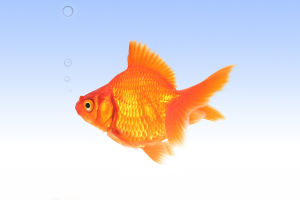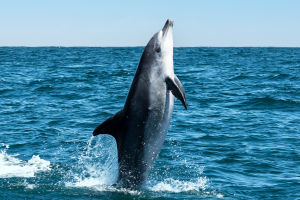The Great White Pelican, known for its striking appearance and graceful presence, is a fascinating creature of the world's wetlands.
With its impressive wingspan and distinctive pinkish bill, this majestic bird is more than just an avian beauty; it's an important part of the wetland ecosystem.
In this article, we'll dive into the Great White Pelican's unique characteristics, natural habitat, and intriguing behaviors that make it one of nature's most captivating birds.
Distinctive Characteristics
The Great White Pelican, scientifically named Pelecanus onocrotalus, stands out for its large size and striking plumage. With a wingspan reaching up to 3.6 meters (almost 12 feet), these pelicans are one of the largest flying birds on Earth. The plumage of the Great White Pelican is mostly white, with hints of pink, which becomes more prominent during the breeding season. Males and females are similar in appearance, although males are slightly larger.
One of the pelican's most recognizable features is its large, flexible bill, which can grow to nearly 45 cm (18 inches) in length. The bill is accompanied by a yellow or pinkish-orange gular pouch that's used to scoop up fish. Unlike many other birds, pelicans do not dive to catch their prey; instead, they use their bill as a net to capture fish in shallow waters, making their hunting style unique among waterfowl.
Habitat and Distribution
The Great White Pelican is found across parts of Africa, Europe, and Asia, with the largest populations concentrated in sub-Saharan Africa. These birds prefer shallow freshwater and brackish wetlands, such as lakes, swamps, and deltas. They are particularly common in the Great Rift Valley in East Africa and can be found in the wetlands of India and Eastern Europe as well.
Their choice of habitat plays a crucial role in their survival. Shallow wetlands provide the ideal hunting grounds for these birds, as they require shallow waters where they can easily scoop up fish. This dependency on specific wetland environments means that pelicans are vulnerable to changes in their habitat, particularly as wetlands worldwide are under threat from climate change and human development.
Feeding Behavior and Social Life
Great White Pelicans are highly social birds, often seen flying in formation or gathering in large colonies during the breeding season. Their cooperative behavior is most apparent in their feeding habits. Unlike many solitary hunters, Great White Pelicans often fish in groups. They work together to herd schools of fish into a concentrated area, where they can then scoop them up with ease. This collective feeding technique increases their success rate, allowing them to feed more efficiently.
When feeding, pelicans use their large gular pouches to catch fish, often draining excess water before swallowing their catch. A single pelican can consume over a kilogram of fish per day, primarily favoring species like carp and tilapia. This feeding method is not only efficient but also a fascinating spectacle for bird watchers who can observe the pelicans working together in near-perfect coordination.
Breeding and Nesting
The breeding season is a time of vibrant change for the Great White Pelican. During this period, their plumage becomes more colorful, and males often display brighter pinkish tones. Nesting colonies are typically established near water, and the birds create nests out of sticks, reeds, and other plant materials. The female lays one to three eggs, which she and her partner take turns incubating over about a month.
After hatching, pelican chicks are entirely dependent on their parents for food and protection. Both parents feed the chicks by regurgitating pre-digested fish directly into their mouths. As the chicks grow, they begin to form small groups called crèches, where they learn essential survival skills within a safe, social setting.
Conservation Status and Challenges
While the Great White Pelican is not currently considered endangered, it faces significant challenges due to habitat loss, pollution, and climate change. Wetlands across the world are shrinking, which poses a direct threat to these birds, as they rely on these habitats for feeding and breeding. In some areas, overfishing has also reduced the availability of food for pelican populations, while pollution from agricultural runoff and plastic waste continues to damage their environments.
Conservation efforts are underway in several regions to protect wetland habitats and ensure the survival of this species. In some areas, organizations are working to restore degraded wetlands, reduce pollution, and implement sustainable fishing practices. Efforts are also being made to educate local communities about the importance of preserving these ecosystems and the remarkable wildlife, like the Great White Pelican, that depend on them.
The Symbolism of the Great White Pelican
Beyond its ecological role, the Great White Pelican has held a place in human culture and symbolism for centuries. In some cultures, the pelican symbolizes generosity and nurturing, as it is often seen as a devoted parent who goes to great lengths to feed its young. This symbolic connection has led to the pelican appearing in various works of art, literature, and folklore.
Whether seen gliding across serene wetland waters or soaring majestically through the skies, the Great White Pelican remains one of nature's most impressive birds. With its unique behavior, collaborative feeding methods, and resilience in the face of environmental threats, the Great White Pelican is a true symbol of the beauty and complexity of the natural world.


